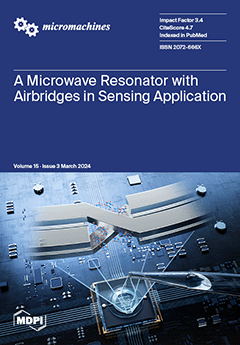Open AccessReview
Comprehensive Study and Design of Graphene Transistor
by
Qian Cai, Jiachi Ye, Belal Jahannia, Hao Wang, Chandraman Patil, Rasul Al Foysal Redoy, Abdulrahman Sidam, Sinan Sameer, Sultan Aljohani, Muhammed Umer, Aseel Alsulami, Essa Shibli, Bassim Arkook, Yas Al-Hadeethi, Hamed Dalir and Elham Heidari
Cited by 9 | Viewed by 4381
Abstract
Graphene, renowned for its exceptional electrical, optical, and mechanical properties, takes center stage in the realm of next-generation electronics. In this paper, we provide a thorough investigation into the comprehensive fabrication process of graphene field-effect transistors. Recognizing the pivotal role graphene quality plays
[...] Read more.
Graphene, renowned for its exceptional electrical, optical, and mechanical properties, takes center stage in the realm of next-generation electronics. In this paper, we provide a thorough investigation into the comprehensive fabrication process of graphene field-effect transistors. Recognizing the pivotal role graphene quality plays in determining device performance, we explore many techniques and metrological methods to assess and ensure the superior quality of graphene layers. In addition, we delve into the intricate nuances of doping graphene and examine its effects on electronic properties. We uncover the transformative impact these dopants have on the charge carrier concentration, bandgap, and overall device performance. By amalgamating these critical facets of graphene field-effect transistors fabrication and analysis, this study offers a holistic understanding for researchers and engineers aiming to optimize the performance of graphene-based electronic devices.
Full article
►▼
Show Figures






